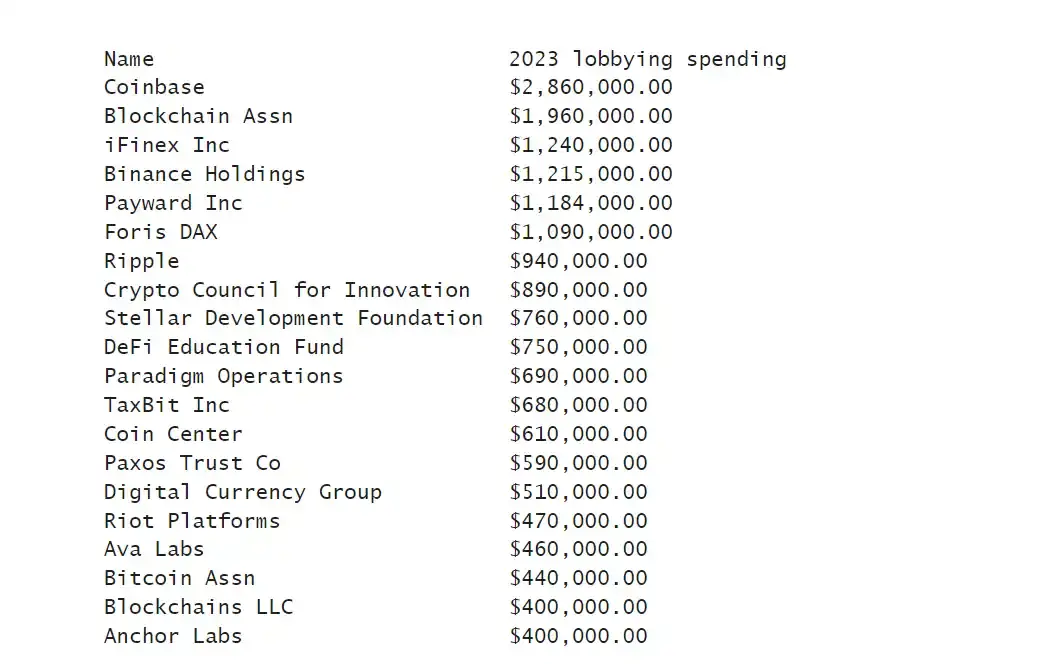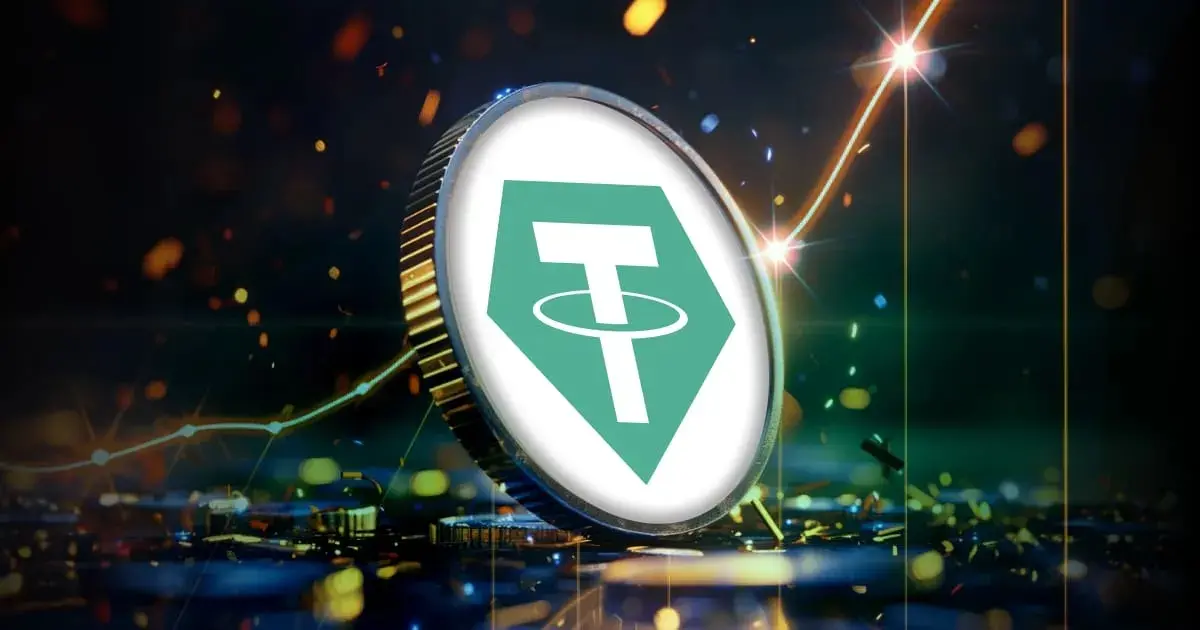FlowHarbour Research: Analysis of Tether Risks and Possible Countermeasures
1. Risks of Revenue Loss Due to Stablecoin Legislation
As of November 28, 2024, the market capitalization of USDT is approximately $132.3 billion, and it is expected that the stablecoin market will exceed $2.8 trillion by 2028. The regulatory dynamics surrounding stablecoins are of great concern to the market. The market capitalization of USDT is shown in the figure below:

On June 7, 2022, U.S. Senators Cynthia Lummis (Republican, Wyoming) and Kirsten Gillibrand (Democrat, New York) introduced the Payment Stablecoin Act. Gillibrand referred to it as "a landmark bipartisan legislation that creates a clear regulatory framework for payment stablecoins, which will protect consumers, promote innovation, and uphold the dollar's dominant position while maintaining a dual banking system." The L-G Act may be one of the most significant regulatory measures targeting USDT in recent years.
The bill will allow non-depository trust companies (non-banks) to issue stablecoins through their own channels as long as the nominal value of all their tokens is below $10 billion. The Lummis-Gillibrand Act stipulates that stablecoin issuers with a scale exceeding $10 billion must be "authorized depository institutions as national stablecoin issuers" to be allowed to operate legally. According to the Lummis-Gillibrand Act, centralized stablecoin companies like Circle (USDC, issuing $33 billion) or Paxos (PAXD) will have two options: either operate through state-level non-bank financial institutions or become depository institutions at the federal or state level that serve as national payment stablecoin providers, similar to money market funds or primary dealers in traditional financial institutions. In the L-G Act, only stablecoins that can be redeemed for sovereign fiat currency at any time, with non-crypto assets as the underlying anchor for MoE, are defined as payment stablecoins. Only payment stablecoins like USDT (depository institution type) and USDC (non-depository institution type) fall under the jurisdiction of the L-G Act, while algorithmic stablecoins and over-collateralized crypto-backed stablecoins (like DAI) are excluded.
At the same time, the L-G Act also includes long-arm jurisdiction clauses, meaning these laws will apply to companies outside the United States. Although Tether is registered in the BVI, it is expected to be subject to this act's jurisdiction because USDT is widely circulated among U.S. investors and exchanges. The act directly identifies Tether and USDT as being within its scope. Tether claims it does not serve U.S. customers, as it does not directly issue tokens to these companies and individuals, but U.S. policymakers are unlikely to accept this regulatory evasion.
Therefore, Tether faces the risk of being issued a prohibition order by the U.S. Treasury or SEC. The L-G Act requires depository institutions to obtain approval from federal or state banking regulators before issuing and redeeming payment stablecoins, and they must be backed by high-quality liquid assets at no less than 100% of the issuance value (such as U.S. dollars, U.S. Treasury bonds). They must publicly disclose the number of outstanding payment stablecoins and detailed information about the assets supporting them and their values monthly, and they are obligated to redeem all outstanding payment stablecoins at face value in fiat currency upon customer request. If Tether triggers such potential obligations or fails to fulfill redemption and disclosure obligations, leading to a prohibition on conducting dollar-related business (Tether has no legal license in the U.S., making its business involving the U.S. effectively illegal), it could result in severe fluctuations in the value of USDT, causing it to decouple from the dollar and enter a death spiral similar to UST.
Additionally, the SEC's attitude towards Tether is also ambiguous. Gary Gensler has publicly stated that he believes "only BTC is a commodity, while all other cryptocurrencies are securities," and has repeatedly expressed serious concerns that stablecoins could disrupt the U.S. financial market. If Tether is classified as a security and brought under regulation, it would undoubtedly deal a heavy blow to USDT, which is a significant part of the gray market, and this news could become a trigger for a run on USDT.
2. Regulatory Risks Related to U.S. Treasury Collateral
Currently, the anchoring mechanism of USDT to the dollar can be described as an "excess reserve mechanism," meaning that each USDT is backed by low-risk underlying assets worth more than $1, with the excess being Tether's net assets (Tether's asset side consists of U.S. Treasury bonds and other collateralized assets, while its liabilities are the USDT it issues). Additionally, due to the widespread use of USDT, many arbitrage traders actively engage in arbitrage when the USDT price deviates slightly, effectively maintaining price stability. Tether publishes quarterly reserve asset audit reports, the scale and composition of which are shown in the figure below:

However, Tether holds a large amount of U.S. Treasury bonds and derivatives, which, while granting it a "central bank status" in the crypto world, has also raised numerous questions about whether it threatens the effectiveness of traditional monetary policy transmission. This has even attracted the attention of U.S. financial regulators. Although the U.S. interest rate corridor system has evolved from a scarce reserve logic to an excess reserve logic after QE, the current ONRRP serves as the most important buffer for the Federal Reserve to absorb TGA and other excess liquidity, and to build a solid floor for the interest rate corridor. Following further issuance of T-bills, interest rate hikes, QE tapering, and QT, the current balance is gradually declining. By the second quarter of 2024, the ONRRP balance had rapidly decreased from a historical high of $2 trillion in 2022 to around $600 billion. As QT deepens, the exhaustion of ONRRP has become a high-probability event. In this context, even while still in the zero elasticity zone of the curve, Tether's holdings of over $10 billion in ONRRP agreements and over $100 billion in U.S. Treasury bonds and MMF balances can already be considered to have a meaningful scale for the stable operation of U.S. monetary policy. Moreover, Tether is a company registered in the BVI that nominally refuses to engage in U.S. related business and is not subject to U.S. legal regulation. Therefore, traditional regulators and the media believe that it poses a certain threat to the order of the U.S. interest rate corridor system, considering it an ant hole in the long dam of U.S. monetary policy, which is not unfounded.
In terms of the quality of Tether's underlying assets, the proportion of cash and cash equivalents has slightly increased in recent years, but only 80% of it consists of highly liquid U.S. Treasury bonds, and the overall liquidity level is relatively average, which is one of the reasons for the frequent doubts about USDT's stability in recent years.

3. Competitive Risks from Stablecoins Issued by Paypal and Traditional Financial Institutions (such as Banks)
Stablecoins can effectively capture value and have unique advantages in mobile payments and cross-border payments, including anonymity, speed, decentralization, universality, and value stability. As a pioneer in collateralized stablecoins that bridge different trading pairs, Tether has not only captured the incremental value and user demand but has also bridged the significant slippage issue caused by using only BTC as an intermediary in exchanges, even laying the groundwork for the introduction of smart contracts, becoming an indispensable infrastructure in the crypto world. Due to its anonymity and high universality, USDT has also inevitably become one of the most important mediums of exchange (MoE) in the black market. However, in contrast to the industry dividends enjoyed by Tether as a market leader, there is also a strong desire among companies capable of crossing this industry barrier to enter the collateralized stablecoin space and share in the profits. Tether's net profit reached $2.2 billion in the third quarter of 2024, and for traditional internet payment giants like Paypal and traditional commercial banks, the lucrative returns from payment stablecoin business itself, along with the seamless integration of payment stablecoins with their main payment business, can create extremely powerful synergies.
Currently, Tether's most significant moat in the collateralized centralized stablecoin industry is its substantial "reserves," achieving over-collateralization while ensuring that its underlying assets are all highly liquid, low-risk U.S. Treasury bonds, Treasury derivatives on the Federal Reserve's liability side (MMF), and a small amount of Bitcoin. However, as discussed above, central banks (issuing digital currencies) and commercial banks have far greater capital adequacy than Tether. As a purely collateralized stablecoin, Tether's business model does not impose very high requirements on the issuer's crypto-native business thinking; it only needs to use its capital resources to subsidize and attract on-chain users, subsequently entering on-chain asset trading pairs, and through cooperation with exchanges (such as fee discounts) to attract centralized exchange users to use stablecoins (similar to Binance promoting XUSD and FDUSD), thus capturing at least a portion of the market share from Tether. The potential competition Tether faces (more from non-crypto-native players) poses significant challenges to its business.
4. Litigation Risks
In addition to the aforementioned risks, Tether also faces multiple potential lawsuits and investigation risks. In 2021, the U.S. Department of Justice intervened in the investigation of Tether, and in 2022, the Tether case was handed over to prosecutor Darmian William of the Southern District of NY, who specializes in high-profile cases in the crypto field (SBF, FTX, etc.). The main reasons for the DOJ's investigation into Bitfinex and Tether are allegations of violations of sanctions and anti-money laundering regulations, as well as issues related to Bitfinex misappropriating Tether funds. Specifically, the DOJ is investigating whether Tether has been used by third parties to fund illegal activities such as drug trafficking, terrorism, and hacking, or to launder the proceeds of these activities. Additionally, the U.S. Treasury is also considering imposing sanctions on Tether, as USDT is widely used by individuals and groups sanctioned by the U.S., including Hamas and Russian arms dealers. Furthermore, Tether's transparency issues have also been questioned, as it has long been accused of money laundering and lacking audit transparency. The focus of the investigation is on whether Tether's financial operations are legal and whether it has properly reported the liquidity of its assets and the underlying supporting assets. Due to these reasons, Bitfinex and Tether have long used some gray shadow banking services like Crypto Capital, leading to a vicious cycle of compliance risks.
Moreover, Tether faces multiple lawsuits, including several crypto traders suing Tether, accusing it of colluding to manipulate cryptocurrency market prices, violating the Commodity Exchange Act (CEA) and the Sherman Antitrust Act. The plaintiffs allege that Tether and Bitfinex pushed USDT into the market through "large and carefully arranged purchases and promotional activities," creating a false impression of strong demand to drive up cryptocurrency prices; this includes a lawsuit from the well-known crypto lending company Celsius against Tether, claiming that Tether improperly liquidated approximately $2.4 billion worth of Bitcoin before its bankruptcy. Tether responded by calling the lawsuit extortion and stated that its actions complied with the terms of the agreement, as Celsius failed to provide collateral as required before liquidation. These lawsuits are also likely to have adverse effects on Tether.
5. Alternatives: USDC and Other Stablecoins
It is worth noting that despite the various unfavorable factors mentioned above, USDT still occupies the vast majority of the stablecoin market capitalization and is currently the most widely circulated and utilized stablecoin, with a low probability of encountering significant issues in the short term. Moreover, Tether and its parent company Bitfinex have invested substantial funds in out-of-court lobbying in recent years (as shown in the figure below).

At the same time, after Trump's election, he clearly expressed dissatisfaction with anti-cryptocurrency policymakers like Gary Gensler and nominated Howard Lutnick, who has very close ties to Tether, as a candidate for Secretary of Commerce. Lutnick's financial company, Cantor Fitzgerald, is Tether's custodian and has also engaged in a $2 billion lending project with Tether. Therefore, it can be considered that the risk of Tether being shut down by U.S. policy authorities has further decreased after Trump's election.
However, assuming that due to U.S. regulatory policies and other reasons, Tether suffers a significant blow and a black swan event occurs where USDT decouples from the dollar, other stablecoins represented by USDC are the primary choice to fill the ecological niche of USDT in terms of inflows, outflows, and trading pair anchoring.
Overall, USDC strictly adheres to U.S. regulatory rules and excels in transparency, while its weaknesses are clearly inferior to USDT in terms of circulation and acceptance. USDC complies with SEC requirements for public companies by undergoing third-party annual audits and disclosing its underlying asset status weekly, with monthly audits by the Big Four, while USDT does not have a strict audit in the literal sense, and its supporting asset status is disclosed monthly. The comparison between USDT and USDC is shown in the table below:










